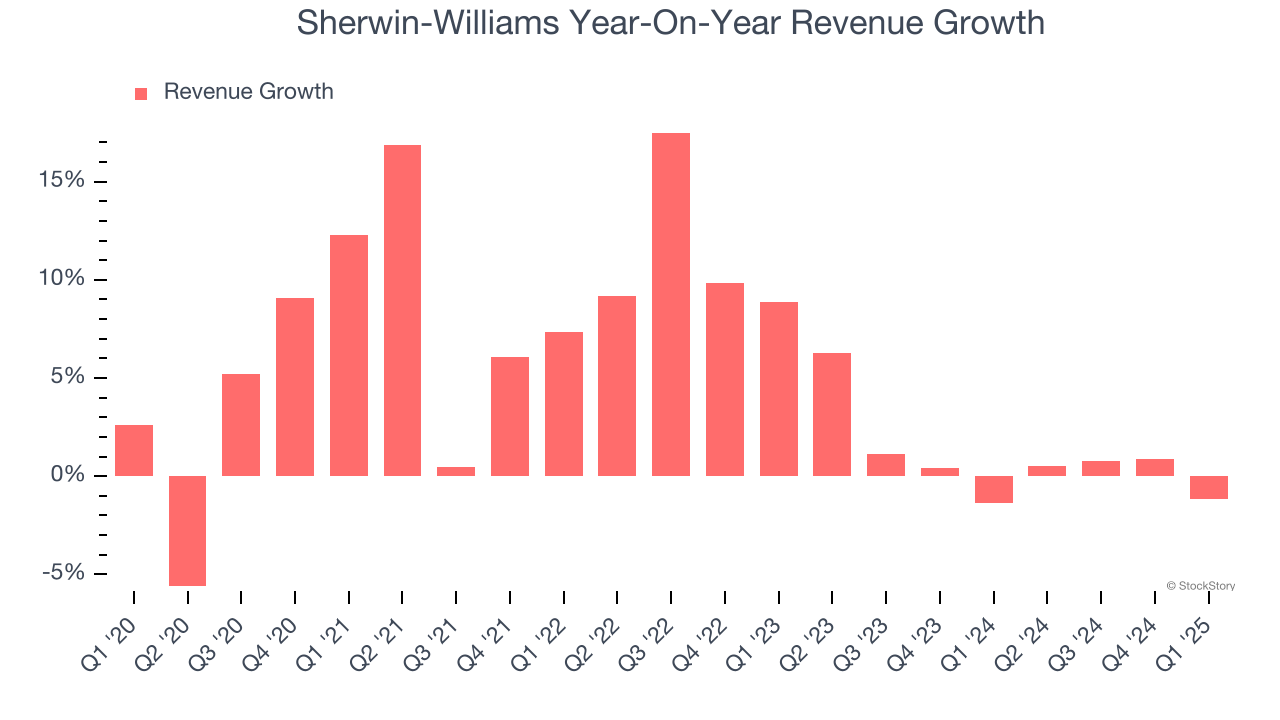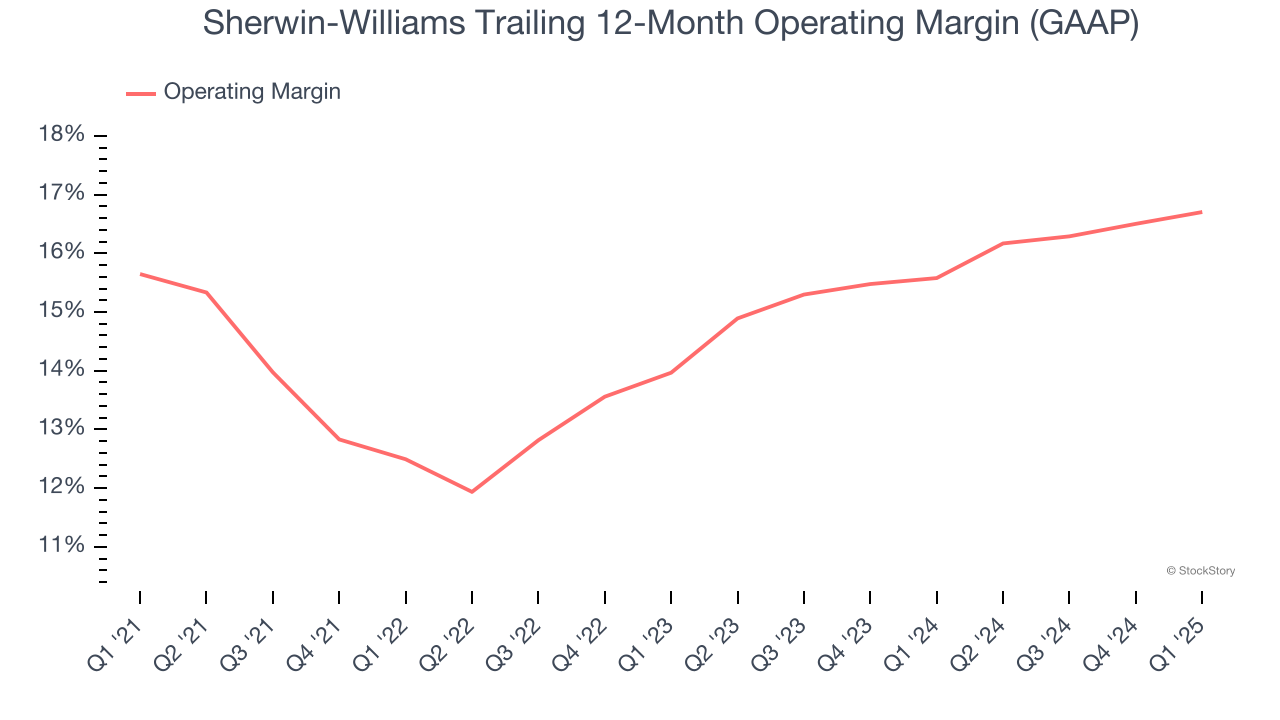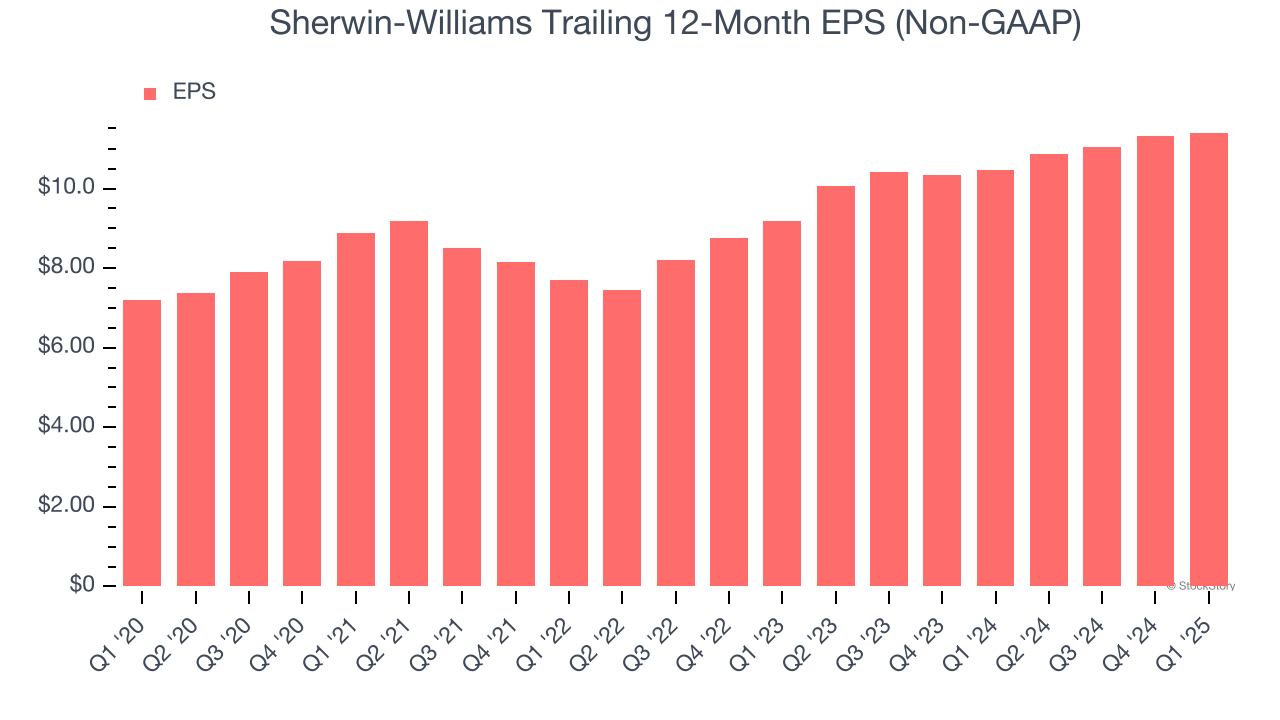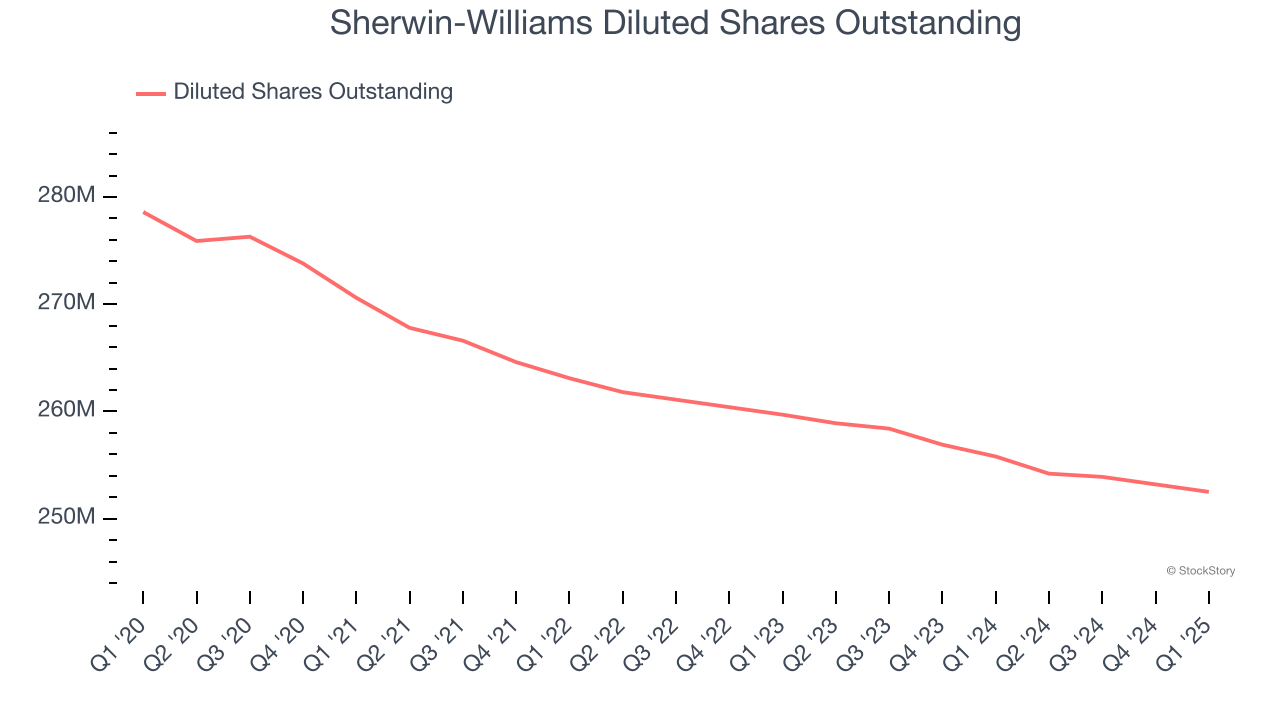
Paint and coating manufacturer Sherwin-Williams (NYSE: SHW) fell short of the market’s revenue expectations in Q1 CY2025, with sales falling 1.1% year on year to $5.31 billion. Its non-GAAP profit of $2.25 per share was 4.1% above analysts’ consensus estimates.
Is now the time to buy Sherwin-Williams? Find out by accessing our full research report, it’s free.
Sherwin-Williams (SHW) Q1 CY2025 Highlights:
- Revenue: $5.31 billion vs analyst estimates of $5.39 billion (1.1% year-on-year decline, 1.6% miss)
- Adjusted EPS: $2.25 vs analyst estimates of $2.16 (4.1% beat)
- Adjusted EBITDA: $937 million vs analyst estimates of $910.9 million (17.7% margin, 2.9% beat)
- Management reiterated its full-year Adjusted EPS guidance of $11.85 at the midpoint
- Operating Margin: 14.4%, in line with the same quarter last year
- Market Capitalization: $83.08 billion
"In a demand environment that remained choppy as we anticipated, Sherwin-Williams continued to execute our strategy and delivered solid first quarter results driven by gross margin expansion and good cost control," said Chair, President and Chief Executive Officer, Heidi G. Petz.
Company Overview
Widely known for its success in the paint industry, Sherwin-Williams (NYSE: SHW) is a manufacturer of paints, coatings, and related products.
Sales Growth
A company’s long-term sales performance is one signal of its overall quality. Even a bad business can shine for one or two quarters, but a top-tier one grows for years. Regrettably, Sherwin-Williams’s sales grew at a tepid 5.1% compounded annual growth rate over the last five years. This was below our standard for the industrials sector and is a poor baseline for our analysis.

Long-term growth is the most important, but within industrials, a half-decade historical view may miss new industry trends or demand cycles. Sherwin-Williams’s recent performance shows its demand has slowed as its revenue was flat over the last two years. 
This quarter, Sherwin-Williams missed Wall Street’s estimates and reported a rather uninspiring 1.1% year-on-year revenue decline, generating $5.31 billion of revenue.
Looking ahead, sell-side analysts expect revenue to grow 3.2% over the next 12 months. Although this projection implies its newer products and services will spur better top-line performance, it is still below the sector average.
Today’s young investors won’t have read the timeless lessons in Gorilla Game: Picking Winners In High Technology because it was written more than 20 years ago when Microsoft and Apple were first establishing their supremacy. But if we apply the same principles, then enterprise software stocks leveraging their own generative AI capabilities may well be the Gorillas of the future. So, in that spirit, we are excited to present our Special Free Report on a profitable, fast-growing enterprise software stock that is already riding the automation wave and looking to catch the generative AI next.
Operating Margin
Operating margin is an important measure of profitability as it shows the portion of revenue left after accounting for all core expenses – everything from the cost of goods sold to advertising and wages. It’s also useful for comparing profitability across companies with different levels of debt and tax rates because it excludes interest and taxes.
Sherwin-Williams has been an efficient company over the last five years. It was one of the more profitable businesses in the industrials sector, boasting an average operating margin of 14.9%. This result isn’t surprising as its high gross margin gives it a favorable starting point.
Analyzing the trend in its profitability, Sherwin-Williams’s operating margin rose by 1.1 percentage points over the last five years, as its sales growth gave it operating leverage.

This quarter, Sherwin-Williams generated an operating profit margin of 14.4%, in line with the same quarter last year. This indicates the company’s cost structure has recently been stable.
Earnings Per Share
Revenue trends explain a company’s historical growth, but the long-term change in earnings per share (EPS) points to the profitability of that growth – for example, a company could inflate its sales through excessive spending on advertising and promotions.
Sherwin-Williams’s EPS grew at a decent 9.7% compounded annual growth rate over the last five years, higher than its 5.1% annualized revenue growth. This tells us the company became more profitable on a per-share basis as it expanded.

Diving into the nuances of Sherwin-Williams’s earnings can give us a better understanding of its performance. As we mentioned earlier, Sherwin-Williams’s operating margin was flat this quarter but expanded by 1.1 percentage points over the last five years. On top of that, its share count shrank by 9.4%. These are positive signs for shareholders because improving profitability and share buybacks turbocharge EPS growth relative to revenue growth. 
Like with revenue, we analyze EPS over a more recent period because it can provide insight into an emerging theme or development for the business.
For Sherwin-Williams, its two-year annual EPS growth of 11.5% was higher than its five-year trend. This acceleration made it one of the faster-growing industrials companies in recent history.
In Q1, Sherwin-Williams reported EPS at $2.25, up from $2.17 in the same quarter last year. This print beat analysts’ estimates by 4.1%. Over the next 12 months, Wall Street expects Sherwin-Williams’s full-year EPS of $11.41 to grow 7.6%.
Key Takeaways from Sherwin-Williams’s Q1 Results
It was encouraging to see Sherwin-Williams beat analysts’ EBITDA expectations this quarter. We were also happy its EPS outperformed Wall Street’s estimates. On the other hand, its revenue missed. Overall, this quarter was mixed. The stock traded up 2% to $338.49 immediately after reporting.
So should you invest in Sherwin-Williams right now? We think that the latest quarter is only one piece of the longer-term business quality puzzle. Quality, when combined with valuation, can help determine if the stock is a buy. We cover that in our actionable full research report which you can read here, it’s free.


